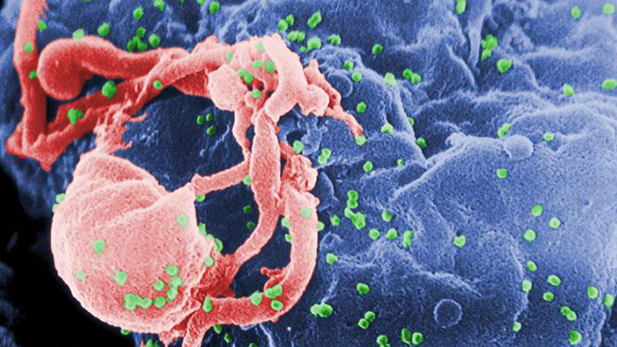 Scanning electron micrograph of HIV-1 virions budding from a cultured lymphocyte.
Scanning electron micrograph of HIV-1 virions budding from a cultured lymphocyte. Research at the University of Arizona has uncovered the earliest stages of the HIV/AIDS epidemic in the United States and, contrary to previous belief, it suggests the virus first took hold in New York City.
UA evolutionary biologist Michael Worobey and his team conducted genomic analysis of blood samples from eight patients. The samples, collected in the late 1970s, showed genetic diversity, evidence that the virus was circulating well before published reports in 1981 describing HIV.
 Michael Worobey
Michael Worobey“It's direct evidence of many years of circulation of this virus in the United States before HIV and AIDS were finally recognized,” he said.
The research, published online in the journal Nature, indicates that the epidemic’s genesis was in New York City and not San Francisco, Worobey said.
“We can date the jump into the U.S. at about 1970 or 1971. And you see a very telltale pattern of extensive genetic diversity in New York City suggesting New York City was the key hub of diversification for the virus,” Worobey said.
The researchers also said the person identified as “Patient Zero,” as having brought AIDS to North America, was wrongly identified.
Listen to Worobey discuss his research efforts.
Read the study.


By submitting your comments, you hereby give AZPM the right to post your comments and potentially use them in any other form of media operated by this institution.